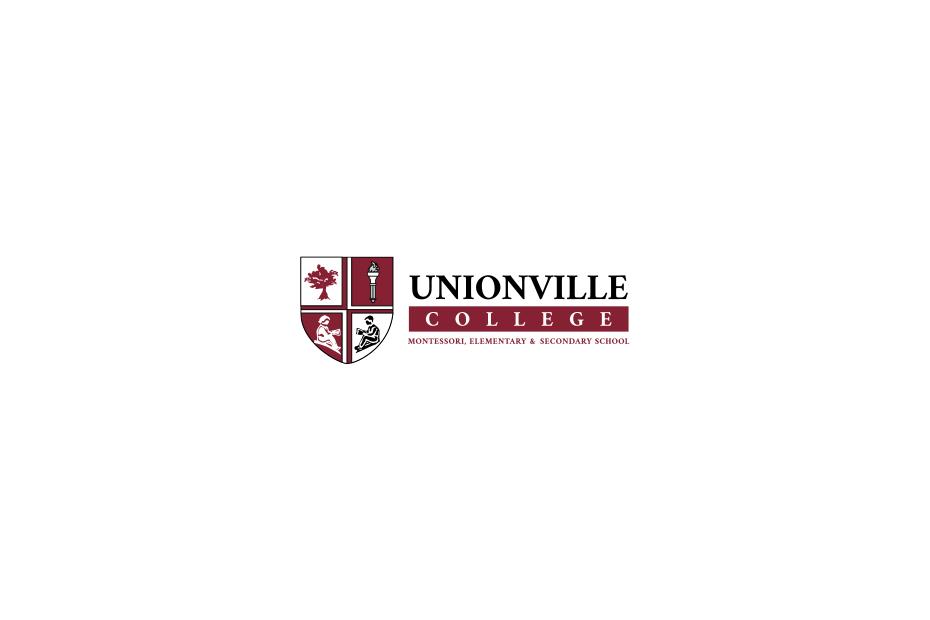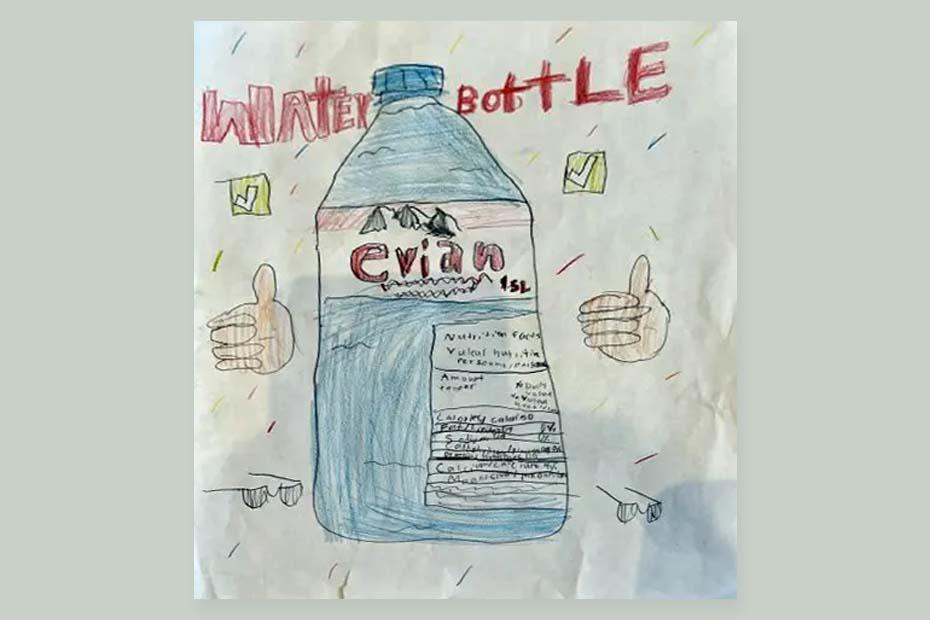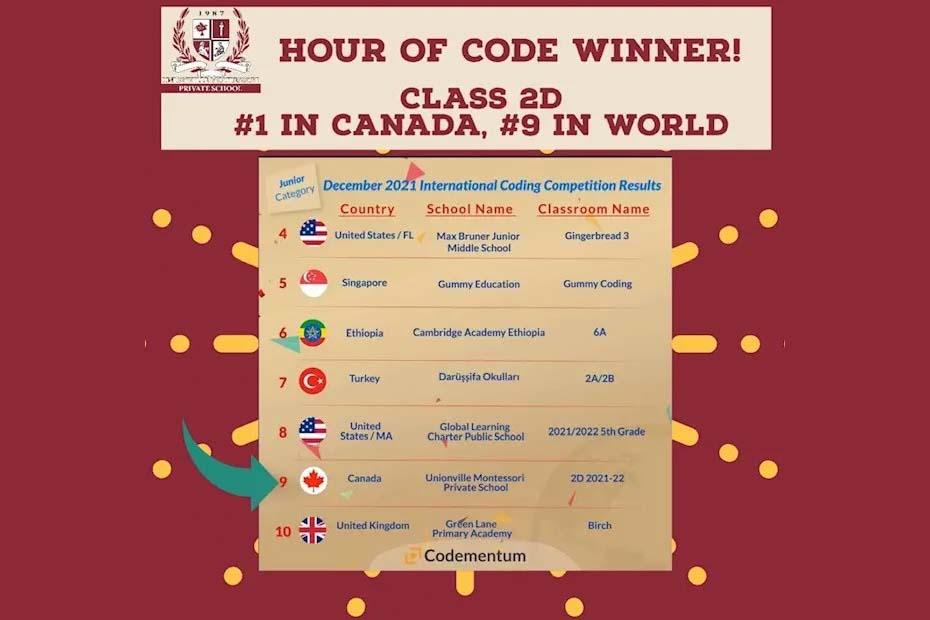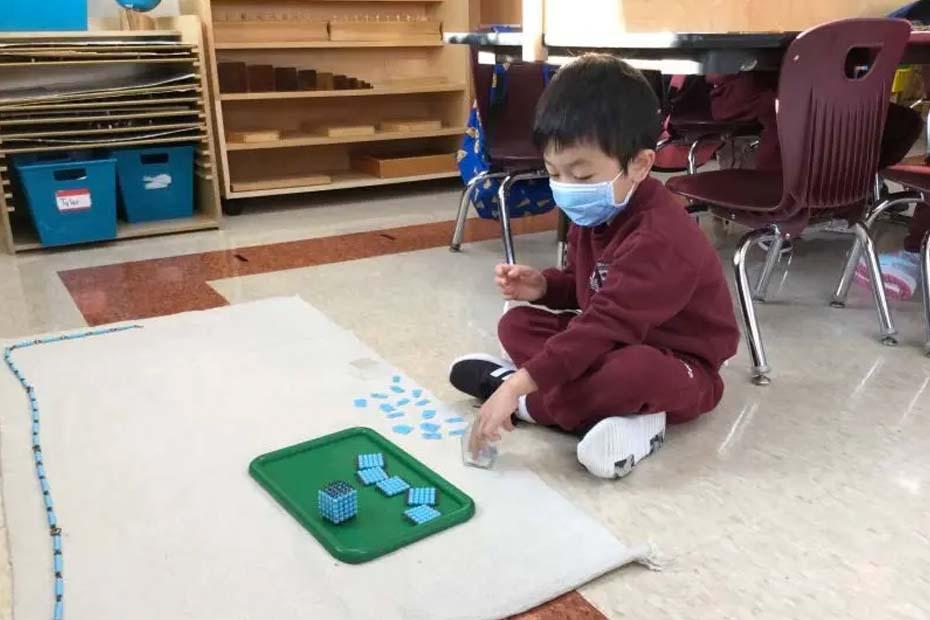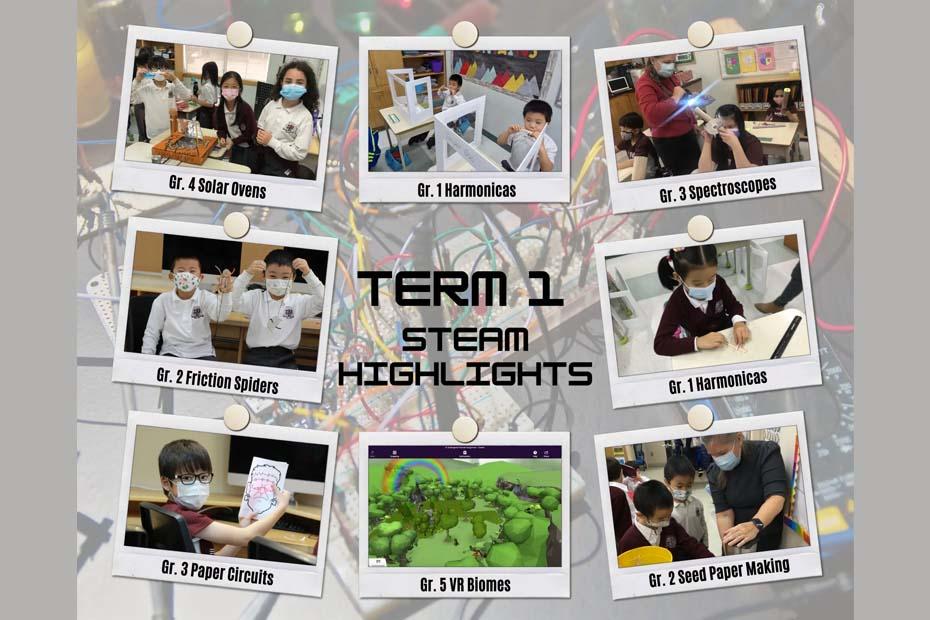Students in the Montessori classroom spend much time working with the Sensorial Materials. These materials aid in the development of essential basic skills needed for mathematical work: attention to detail, order and sequence. Children are formally introduced to numbers in the classroom using the Number Rods, Sandpaper Numbers, Spindle Rods and Numbers and Counters. These materials are very “hands-on”; the child can hold, count and manipulate the objects as they are introduced to quantity and symbols from 0 to 10.
Once these activities have been mastered and the child has a solid understanding of up to 10, they move on to an introduction of the Decimal System using the Bead Materials, Number Cards, the “Bank” and Stamp Game. This gives the child concrete, hands-on experiences with Units, Tens, Hundreds and Thousands. At this time they are also working with the Teen and Ten Boards which are used for learning linear counting up to 100.
Once these activities have been mastered, then the child will move on to the Snake Game, Strip Boards and Charts. All give the child concrete, hands-on experience with Addition, Multiplication, Subtraction and Division, during which time the child records their results to help them remember. With the progression through these materials, the student begins their transition to abstraction.
With repetition, the child internalizes the function of arithmetic and gradually moves away from concrete to abstract. In our classrooms, students also gain experience with Skip Counting to 1000, Fractions, Geometry, Telling Time, Measurement and Money. All of the Montessori Mathematics materials are experienced by the child in a very relaxed way throughout the activity and the students are allowed to proceed at their own pace.
In the words of Dr. Montessori herself… “There should never be any pressure, no matter how subtle, to move faster or further than the child’s natural inclination.” Through working with the Montessori materials, when the Casa students graduate and move on to Grade One, they have developed a solid math foundation to build on.
Learn more about the Casa programme
